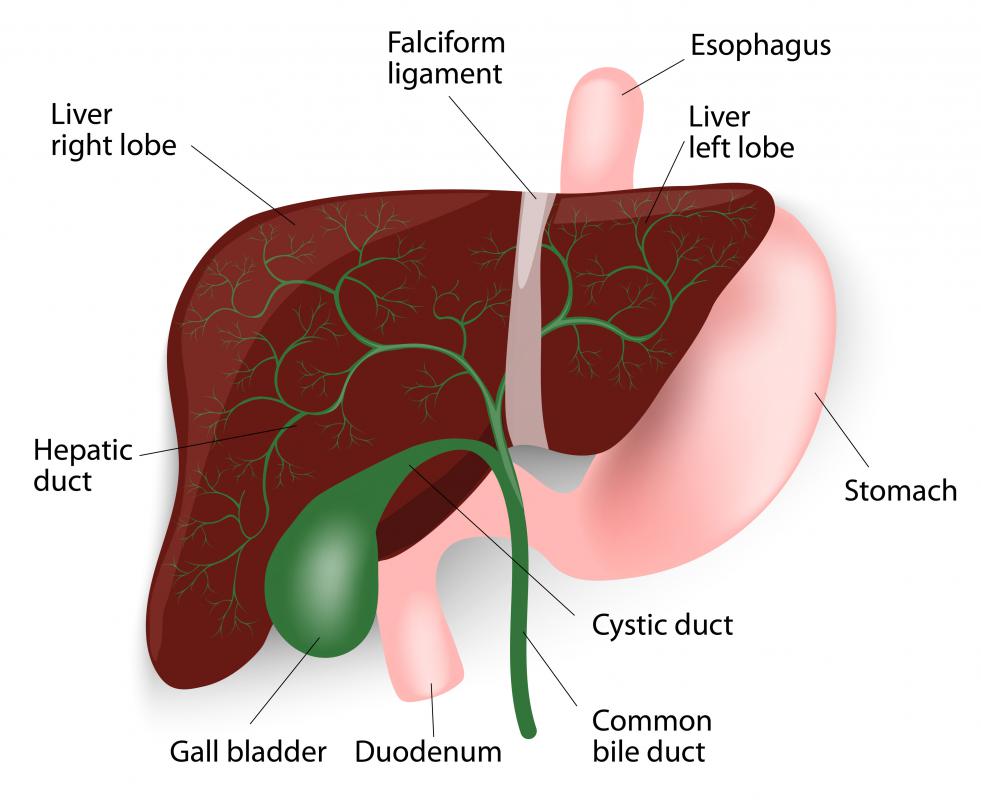At WiseGEEK, we're committed to delivering accurate, trustworthy information. Our expert-authored content is rigorously fact-checked and sourced from credible authorities. Discover how we uphold the highest standards in providing you with reliable knowledge.
What is the Omental Foramen?
The omental foramen is a hole that can be found between the body's stomach and liver. It is created by folds of the peritoneum, a thin layer of cells that lines the abdominal cavity. It is also known as the foramen of Winslow or the epiploic foramen.
This particular opening of the body is so named because of its specific location at the peritoneum called the omentum. It consists of the greater omentum, which hovers above the stomach, and the lesser omentum, which starts from the liver and terminates at the beginning of the small intestine, called the duodenum. The adjective "epiploic" is of Greek origin, referring to the greater omentum's "floating" location. The foramen of Winslow term traces its origin to Jacques-Benigne Winslow, an 18th-century Danish-born anatomist who is best known for writing the first treatise of anatomy as a descriptive science.

The purpose of the omental foramen is to connect the peritoneum's two sacs. These are pouches or enclosures that can be found not only in animals, but in plants as well. One of these structures is called the greater sac, which serves as the general abdominal cavity. It is located within the peritoneum and outside the lesser sac, which is also referred to as the omental bursa. The lesser sac is formed by the greater omentum's inner folds, the exterior side of which actually forms the omental foramen.

The omental opening has five borders. The anterior or front border consists of an area of the lesser omentum called the hepatoduodenal ligament. The common bile duct, the hepatic artery and the hepatic portal vein run within its layers. The posterior or rear border comprises the peritoneum that covers the posterior vena cava, a vein that transports de-oxygenated blood from the body's lower half to a chamber of the heart called the right atrium. The superior border encloses the liver's caudate lobe, which is actually bound to the right by the posterior vena cava.
The inferior border of the omental foramen covers the duodenum and hepatic artery. The latter is a small blood vessel that delivers oxygenated blood to the duodenum, among other body parts. The final border of the omental foramen, the left lateral, forms the gastrosplenic ligament and splenorenal ligament.
The omental foramen can leak upon rupture. Usually, it leaks into the lesser sac, since this enclosure is located behind the stomach. If the lesser sac were located at the front of the stomach, the omental foramen would leak into the greater sac instead.
AS FEATURED ON:
AS FEATURED ON:












Discuss this Article
Post your comments